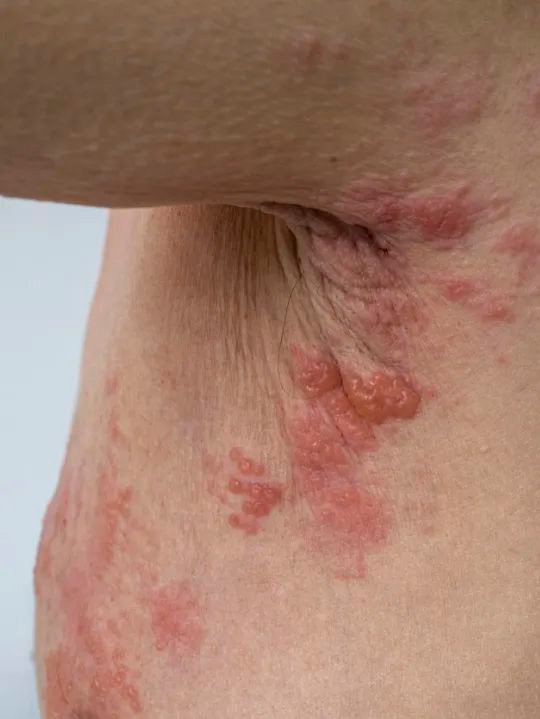


Prevention and Vaccine for Herpes Zoster (SHINGRIX)
Varicella-zoster virus is a type of herpes virus that commonly infects human. Primary infection causes chickenpox, which is very common in children. The vast majority of patients infected with chickenpox recover uneventfully, although complications with lung or brain involvement can sometimes occur causing morbidity and mortality. These complications occur more frequently if primary infection occurs in adults.
Herpes Zoster typically causes more pain and less itching than chicken pox; patients may suffer from headache and fever and feel burning, itching, tingling, or extreme sensitivity on the skin (usually limited to an area on one side of the body). These symptoms are typically present for one to three days, sometimes more, before a red rash appears in the same area – a zoster rash usually occurs in a band-like fashion on only one side of the body. The rash quickly turns into groups of blisters, which generally last for two to three weeks. At first the blisters is clear, before turning yellow or bloody and crusted over (scabbing) – they will then disappear. The pain with this infection can be severe, especially in the elderly.
What treatments are available for Herpes Zoster?
Vaccine against the varicella-zoster virus is available. Typically given to children, the vaccine also may be given to adults who have not contracted the virus before. An added benefit of the vaccination is that once protected from the chickenpox virus, theoretically the person will never develop herpes zoster in his lifetime. However long-term studies are needed to see how complete a protection and also the duration of protection the vaccine can confer to the person receiving the vaccine
As far as treatment is concerned, zoster usually clears upon its own within a few weeks. While zoster is clearing, pain relievers can help ease discomfort, and cool compresses may provide soothing relief. If diagnosed early (within 72 hours of onset of rash), oral anti-viral medication can be prescribed to shorten the course of the disease. This medication is often prescribed when the zoster is severe or affects the eye area. In addition to treating the zoster, anti-viral medication can prevent post-herpetic neuralgia (pain, numbness, itching, and tingling that can potentially last for months even after the rash clears). The earlier treatment is started, the better the results.
Antibiotic treatment may be needed in cases where a bacterial infection develops in the blisters, delaying the healing process. Persistent pain and redness are indicators of an infection and should be treated as soon as possible by a qualified doctor, as it can lead to scarring.


